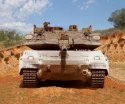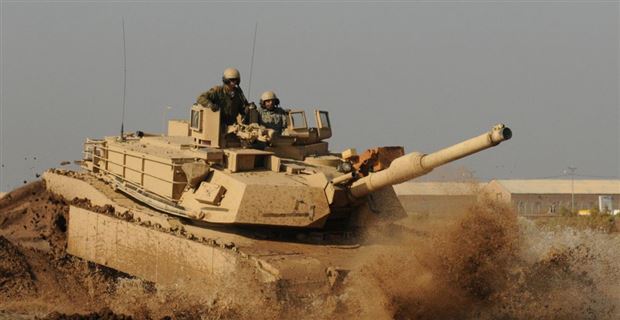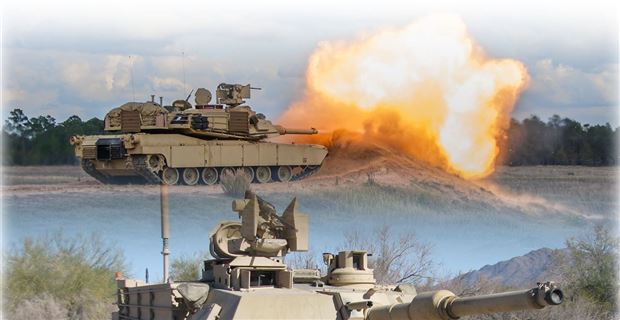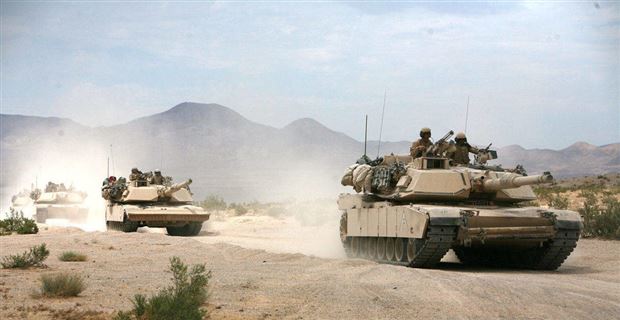First New Army M1A2 SEP v3 Abrams Tank Arrives
The Army is preparing to receive delivery of its first of six newly-upgraded MIA2 SEP v3 Abrams Main Battle Tank pilot tank vehicles -- specifically engineered to keep pace
By Kris Osborn
The first MIA2 SEP v3 tank, built by General Dynamics Land Systems, is slated to arrive as soon as this month – as part of a delivery of initial prototype vehicles, developers said.
“The Army's ultimate intent is to upgrade the entire fleet of M1A2 vehicles -- at this time, over 1,500 tanks,” Ashley Givens, spokeswoman for PEO GCS, told Scout Warrior.
The first v3 pilot vehicles will feature technological advancements in communications, reliability, sustainment and fuel efficiency and upgraded armor.
This current mobility and power upgrade, among other things, adds an auxiliary power unit for fuel efficiency and on-board electrical systems, improved armor materials, upgraded engines and transmission and a 28-volt upgraded drive system.
“The Abrams has been around since early 80s, and the original designers were forward thinking to build in the provisions for continual upgrade. Over the years, there have been significant improvements in sensor capabilities, power generation, mobility, lethality, survivability, armor and situational awareness,” Donald Kotchman, Vice President, Tracked Combat Vehicles, General Dynamics Land Systems, told Scout Warrior in an interview.
In addition to receiving a common high-resolution display for gunner and commander stations, some of the current electronics, called Line Replaceable Units, will be replaced with new Line Replaceable Modules including the commander’s display unit, driver’s control panel, gunner’s control panel, turret control unit and a common high-resolution display, developers from General Dynamics Land Systems say.
Facilitating continued upgrades, innovations and modernization efforts for the Abrams in years to come is the principle rationale upon which the Line Replacement Modules is based. It encompasses the much-discussed “open architecture” approach wherein computing standards, electronics, hardware and software systems can efficiency be integrated with new technologies as they emerge.
Kotchman added that moving to Line Replaceable Modules vastly improves computing capacity, power distribution and fire-control technology for the Abrams.
“The principle difference between the Line Replaceable Unit and Module is modularity. Currently to initiate a repair or an upgrade of a LRU, you must remove the entire unit from the tank, take it to a test bench and make the changes. Under the Line Replaceable Module concept, internal diagnostics isolates and determines failure at the card level. The card has been constructed such that you can remove it and replace it without damaging it,” Kotchman said. “Similarly, when new capability is introduced or increased computing power is required, changes can be made at the card level rather than redesigning the entire unit.”
This M1A2 SEP v3 effort also initiates the integration of upgraded ammunition data links and electronic warfare devices such as the Counter Remote Controlled Improvised Explosive Device – Electronic Warfare – CREW. An increased AMPs alternator is also part of this upgrade, along with Ethernet cables designed to better network vehicle sensors together.
The Abrams is also expected to get an advanced force-tracking system which uses GPS technology to rapidly update digital moving map displays with icons showing friendly and enemy force positions.
The system, called Joint Battle Command Platform, uses an extremely fast Blue Force Tracker 2 Satcom network able to reduce latency and massively shorten refresh time. Having rapid force-position updates in a fast-moving combat circumstance, quite naturally, could bring decisive advantages in both mechanized and counterinsurgency warfare.
The GDLS development deal also advances a commensurate effort to design and construct and even more advanced M1A2 SEP v4 Abrams tank variant for the 2020s and beyond. The v4 is designed to be more lethal, better protected, equipped with new sensors and armed with upgraded, more effective weapons, service officials said.
“The current M1A2 SEPv3 production will transition to the v4 configuration in 2023. The v4 upgrade is currently scheduled to begin production in 2023 with fielding in 2025,” Givens said.
The Army-GDLS deal is also the first contract is for SEPv4 upgrades, which include the Commander’s Primary Sight, an improved Gunner’s Primary Sight and enhancements to sensors, lethality and survivability.
“General Dynamics Land Systems will deliver seven prototype M1A2 SEPv4 tanks to the Army. The contract has an initial value of $311 million,” a company statement said.
Advanced networking technology with next-generation sights, sensors, targeting systems and digital networking technology -- are all key elements of an ongoing upgrade to position the platform to successfully engage in combat against rapidly emerging threats, such as the prospect of confronting a Russian T-14 Armata or Chinese 3rd generation Type 99 tank.
The SEP v4 variant, slated to being testing in 2021, will include new laser rangefinder technology, color cameras, integrated on-board networks, new slip-rings, advanced meteorological sensors, ammunition data links, laser warning receivers and a far more lethal, multi-purpose 120mm tank round, Army developers told Scout Warrior.
While Army officials explain that many of the details of the next-gen systems for the future tanks are not available for security reasons, Army developers did explain that the lethality upgrade, referred to as an Engineering Change Proposal, or ECP, is centered around the integration of a higher-tech 3rd generation FLIR – Forward Looking Infrared imaging sensor.
The advanced FLIR uses higher resolution and digital imaging along with an increased ability to detect enemy signatures at farther ranges through various obscurants such as rain, dust or fog, Army official said.
Improved FLIR technologies help tank crews better recognize light and heat signatures emerging from targets such as enemy sensors, electronic signals or enemy vehicles. This enhancement provides an additional asset to a tank commander’s independent thermal viewer.
Rear view sensors and laser detection systems are part of these v4 upgrades as well. Also, newly configured meteorological sensors will better enable Abrams tanks to anticipate and adapt to changing weather or combat conditions more quickly, Army officials said.
“Meteorological sensors are being integrated into the fire control system. It provides information into fire control algorithms that help increase the accuracy and precision of your weapon system,” Givens added.
The emerging M1A2 SEP v4 will also be configured with a new slip-ring leading to the turret and on-board ethernet switch to reduce the number of needed “boxes” by networking sensors to one another in a single vehicle.





















